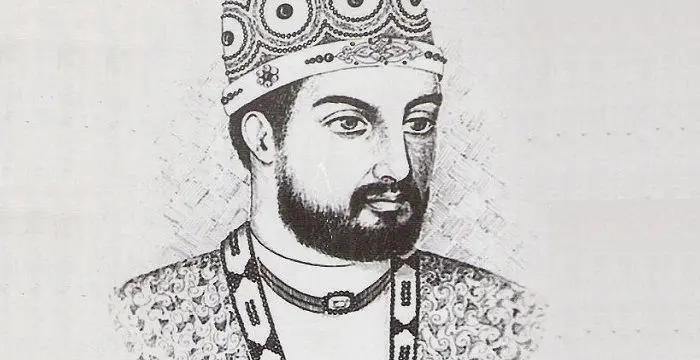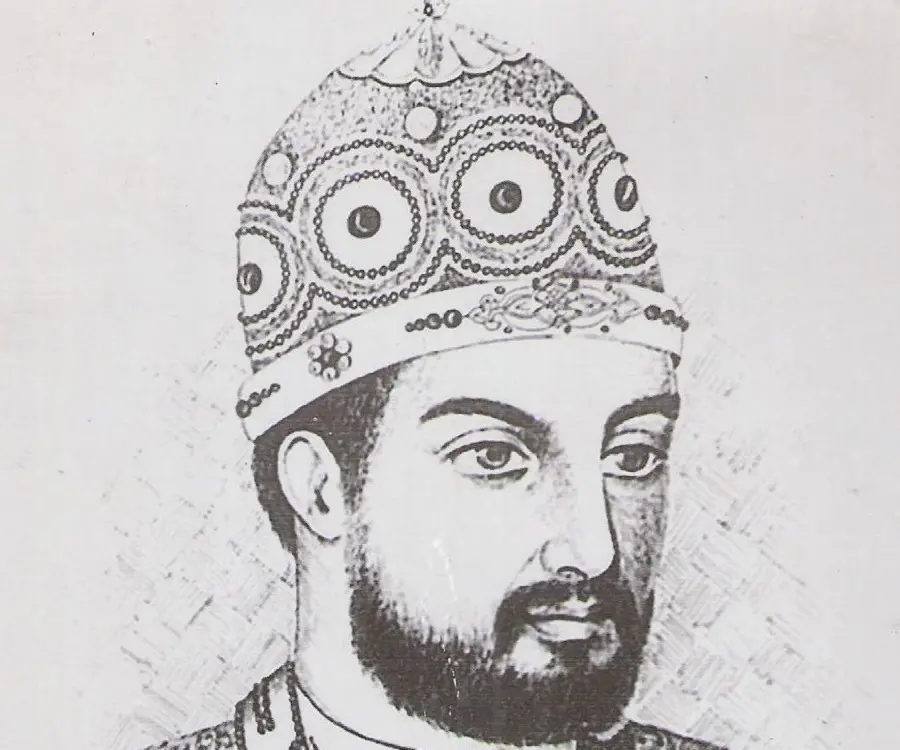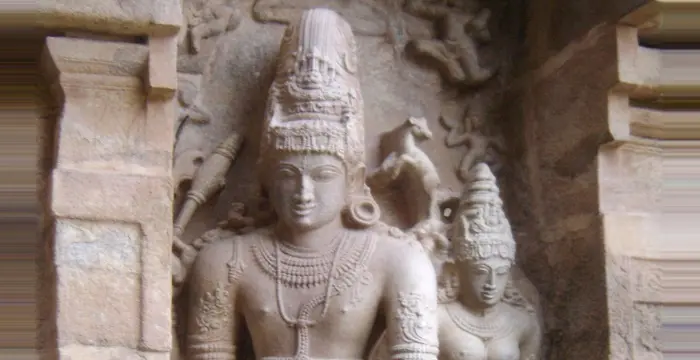
Alauddin Khilji - Emperors, Birthday and Childhood
Alauddin Khilji's Personal Details
Alauddin Khilji was the second emperor of the Khilji Dynasty and regarded as the most powerful ruler of the Delhi Sultanate
| Information | Detail |
|---|---|
| Birthday | 1250 |
| Died on | January 1, 1316 |
| Nationality | Indian |
| Famous | Historical Personalities, Emperors & Kings, Emperors, Kings, Ruler |
| Childrens | Qutb ud din Mubarak Shah, Shihab-ud-din Omar |
| Birth Place | Qalat, Zabul Province |
| Religion | Islam |
| Gender | Male |
| Born in | Qalat, Zabul Province |
| Famous as | Ruler |
| Died at Age | 66 |
// Famous Kings
Sundiata Keita
Sundiata Keita was the founder of the Mali Empire in West Africa. This biography profiles his childhood, early life, struggles, founding of empire, rule, administration, achievements and also gives some fun facts.
Ashoka
Ashoka was the third emperor of the Mauryan Dynasty and ruled almost the entire Indian subcontinent. This biography profiles his childhood, life, reign, achievements and timeline
Murad IV
Murad IV was one of the mighty Sultans in the history of the Ottoman Empire. This biography profiles his childhood, family, accession, rule, administration and timeline.
Alauddin Khilji's photo
Who is Alauddin Khilji?
Alauddin Khilji was the second ruler and probably the most powerful monarch of the Khilji Dynasty. After conquering the throne by killing his uncle and predecessor, Jalaluddin Firuz Khilji, he continued his legacy of invading states and territories to increase his empire over the Indian subcontinent. He was the first Muslim ruler to successfully defeat and conquer southern parts of India. His passion for conquest helped him achieve success at wars, thereby expanding his influence to South India as well. In this endeavor of expansion, he was well supported by his loyal generals, especially Malik Kafur and Khusraw Khan. He ensured that he completely ousted the reigning kings and administered absolute power while invading the northern states. In south India, he used to loot the states and also extracted payment of annual taxes from the overthrown rulers. Besides his expeditions of raiding and conquering, he was engaged in defending the Delhi Sultanate from continuous Mongol invasions. Healso acquired the Koh-i-noor, one of the largest known diamonds in human history, while invading the Kakatiya rulers of Warangal. He also introduced some agrarian as well as market reforms which produced mixed results
// Famous Emperors
Sundiata Keita
Sundiata Keita was the founder of the Mali Empire in West Africa. This biography profiles his childhood, early life, struggles, founding of empire, rule, administration, achievements and also gives some fun facts.
Ashoka
Ashoka was the third emperor of the Mauryan Dynasty and ruled almost the entire Indian subcontinent. This biography profiles his childhood, life, reign, achievements and timeline
Murad IV
Murad IV was one of the mighty Sultans in the history of the Ottoman Empire. This biography profiles his childhood, family, accession, rule, administration and timeline.
Childhood & Early Life
Alauddin Khilji was born as Juna Muhammad Khilji in 1250 in Birbhum district, Bengal, to Shihabuddin Masud, brother of the first Sultan of Khilji dynasty, Jalaluddin Firuz Khilji.
Despite lacking proper education during childhood, he grew up to become a powerful and excellent warrior.
Accession & Reign
He was appointed as Amir-i-Tuzuk (Master of Ceremonies) by the Sultan in his court.
He was made the Governor of Kara in 1291 after successfully suppressing the revolt by Malik Chhajju. Soon after, he was also given the province of Oudh after the victorious expedition of Bhilsa in 1292.
Alauddin treacherously killed Jalaluddin and captured the throne of Delhi, thereby becoming the new Sultan in 1296.
Even though he succeeded in murdering his uncle to assume power as the Sultan of Delhi, he had to face difficulties from rebels within his empire for the first two years, whom he suppressed to maintain absolute power.
The Mongols continuously invaded Delhi during 1296-1308, under different leaders, whom he successfully defeated at the battles of Jalandhar (1298), Kili (1299), Amroha (1305), and Ravi (1306).
Several Mongols settled around Delhi and accepted Islam – they were called ‘New Muslims’. Suspecting their settlement as a conspiracy, he got all of them (around 30,000) killed in a single day in 1298 and got their women and children enslaved.
In 1299, he carried out his first expedition to Gujarat, where the king surrendered to his two generals, Ulugh Khan and Nusrat Khan. Malik Kafur was freed and later became most important general of Alauddin.
He attacked the Rajput fortress of Ranthambor in 1301 but failed in his first attempt. However, his second attempt was successful when its king, Rana Hamir Dev, a descendent of Prithviraj Chauhan, died while fighting bravely.
In 1303, he made a first attempt to invade Warangal but his army was defeated by the army of Kakatiya rulers.
Marwar was invaded in 1308 by his general, Malik Kamaluddin, who attacked the Siwana Fort and captured its king, Satal Dev after a brutal war. The army was defeated, the king was executed and Marwar was conquered.
After his army (sent to invade Jalore) was defeated by its king, Kanhad Dev Sonigara, Alauddin entrusted Kamaluddin to carry out the expedition, which turned successful in the second attempt.
In 1306, he attacked the wealthy state of Baglana. It was being ruled by Rai Karan after being expelled from Gujarat. The expedition was successful, while Rai Karan’s daughter, Devala Devi, was brought to Delhi and married off to his eldest son, Khijir Khan.
Kafur was sent to Devagiri in 1307 to recover taxes from the king. Upon his refusal, he was brought to Delhi and restored as ‘Rai Rayan’ and returned back as his vassal.
He sent his troops to Mongol-controlled territories in Afghanistan, namely, Kandhar, Ghazni and Kabul, under Ghazi Malik, in 1308. Ghazi Malik crushed the Mongols who did not dare to invade India again before the reign of Tughlaq Dynasty.
In 1310, he easily conquered the Hoysala Empire, south of the Krishna River, whose ruler, Veera Ballala surrendered without a war and agreed to pay annual taxes.
The Mabar territory was raided by Alauddin’s army in 1311 under the command of Malik Kafur, who was defeated by the Tamil ruler Vikrama Pandya. However, Kafur managed to plunder enormous wealth Sultanate.
While the North Indian kingdoms were controlled under the direct Sultan Shahi rule, the territories in South India were forced to pay heavy taxes annually since the zone was filled with abundant wealth.
By reducing the taxes to 50% of the agricultural produce, he reduced the burden on the cultivators who had to give a share to landowners as taxes. As such, the landowners had to bear their own taxes without demanding from others.
Even though the cultivators benefitted from not paying a single penny to the landowners, the high taxes that they were forced to pay to Alauddin didn’t leave much.
To increase his control over nobility, he imposed certain rules – seeking his permission for establishing marriage alliances among aristocrats, severe punishment for disloyalty Private households of nobles were also regularly spied.
Major Battles
In 1303, he invaded the kingdom of Mewar and killed Ratan Singh, the king of Chittor, to abduct his beautiful wife, Rani Padmini, who committed Jauhar (suicide) by burning herself in a funeral pyre, while Chittor was successfully conquered.
He progressed towards Malwa in 1305, where a bloody battle was fought between its ruler Mahlak Dev and Alauddin’s general, Ain-ul-Mulk Multani. While the king was killed, Malwa, along with Mandu, Chanderi and Dhar, were captured.
In 1308, he sent his lieutenant, Malik Kafur, to attack Warangal, which saw a fierce battle, after which the Warangal Fort was captured. All its treasure, including one of the largest known diamonds in the world, Koh-i-noor, was looted.
Achievements
With Kafur victorious in reaching the farthest place in South India and building a mosque there, it marked Alauddin’s extensive empire, stretching from Himalayas in the north to Adam’s Bridge in the south.
He administered a price control policy, under which food grains, clothing, medicines, cattle, horses, etc. were sold at fixed prices, preferably low, at various markets in Delhi, which largely benefitted the civilians and soldiers.
Personal Life & Legacy
He died in 1316 after suffering from edema. He was buried at the backside of the Qutb complex, in Mehrauli, Delhi, where a madrasa also stands, dedicated to him.
Trivia
Inspired by the works of Alexander the Great, he took upon the title ‘Sikander-i-Sani’ and got his coins engraved with the name ‘Second Alexander’
// Famous Ruler
Rajendra Chola I
Rajendra Chola I was one of the most successful monarchs of the South Indian Chola Empire. He transformed it into a powerful dynasty under his reign. This biography profiles his childhood, reign, empire, life, achievements and timeline
David I of Scotland
David I was a 12th century king who ruled over Scotland from 1124-1153. This biography of David I provides detailed information about his childhood, life, achievements, works & timeline
Alauddin Khilji biography timelines
- // 1250Alauddin Khilji was born as Juna Muhammad Khilji in 1250 in Birbhum district, Bengal, to Shihabuddin Masud, brother of the first Sultan of Khilji dynasty, Jalaluddin Firuz Khilji.
- // 1291 To 1292He was made the Governor of Kara in 1291 after successfully suppressing the revolt by Malik Chhajju. Soon after, he was also given the province of Oudh after the victorious expedition of Bhilsa in 1292.
- // 1296Alauddin treacherously killed Jalaluddin and captured the throne of Delhi, thereby becoming the new Sultan in 1296.
- // 1296 To 1306The Mongols continuously invaded Delhi during 1296-1308, under different leaders, whom he successfully defeated at the battles of Jalandhar (1298), Kili (1299), Amroha (1305), and Ravi (1306).
- // 1298Several Mongols settled around Delhi and accepted Islam – they were called ‘New Muslims’. Suspecting their settlement as a conspiracy, he got all of them (around 30,000) killed in a single day in 1298 and got their women and children enslaved.
- // 1299In 1299, he carried out his first expedition to Gujarat, where the king surrendered to his two generals, Ulugh Khan and Nusrat Khan. Malik Kafur was freed and later became most important general of Alauddin.
- // 1301He attacked the Rajput fortress of Ranthambor in 1301 but failed in his first attempt. However, his second attempt was successful when its king, Rana Hamir Dev, a descendent of Prithviraj Chauhan, died while fighting bravely.
- // 1303In 1303, he made a first attempt to invade Warangal but his army was defeated by the army of Kakatiya rulers.
- // 1303In 1303, he invaded the kingdom of Mewar and killed Ratan Singh, the king of Chittor, to abduct his beautiful wife, Rani Padmini, who committed Jauhar (suicide) by burning herself in a funeral pyre, while Chittor was successfully conquered.
- // 1305He progressed towards Malwa in 1305, where a bloody battle was fought between its ruler Mahlak Dev and Alauddin’s general, Ain-ul-Mulk Multani. While the king was killed, Malwa, along with Mandu, Chanderi and Dhar, were captured.
- // 1306In 1306, he attacked the wealthy state of Baglana. It was being ruled by Rai Karan after being expelled from Gujarat. The expedition was successful, while Rai Karan’s daughter, Devala Devi, was brought to Delhi and married off to his eldest son, Khijir Khan.
- // 1307Kafur was sent to Devagiri in 1307 to recover taxes from the king. Upon his refusal, he was brought to Delhi and restored as ‘Rai Rayan’ and returned back as his vassal.
- // 1308Marwar was invaded in 1308 by his general, Malik Kamaluddin, who attacked the Siwana Fort and captured its king, Satal Dev after a brutal war. The army was defeated, the king was executed and Marwar was conquered.
- // 1308He sent his troops to Mongol-controlled territories in Afghanistan, namely, Kandhar, Ghazni and Kabul, under Ghazi Malik, in 1308. Ghazi Malik crushed the Mongols who did not dare to invade India again before the reign of Tughlaq Dynasty.
- // 1308In 1308, he sent his lieutenant, Malik Kafur, to attack Warangal, which saw a fierce battle, after which the Warangal Fort was captured. All its treasure, including one of the largest known diamonds in the world, Koh-i-noor, was looted.
- // 1310In 1310, he easily conquered the Hoysala Empire, south of the Krishna River, whose ruler, Veera Ballala surrendered without a war and agreed to pay annual taxes.
- // 1311The Mabar territory was raided by Alauddin’s army in 1311 under the command of Malik Kafur, who was defeated by the Tamil ruler Vikrama Pandya. However, Kafur managed to plunder enormous wealth Sultanate.
- // 1316He died in 1316 after suffering from edema. He was buried at the backside of the Qutb complex, in Mehrauli, Delhi, where a madrasa also stands, dedicated to him.
// Famous Emperors & Kings
Sundiata Keita
Sundiata Keita was the founder of the Mali Empire in West Africa. This biography profiles his childhood, early life, struggles, founding of empire, rule, administration, achievements and also gives some fun facts.
Ashoka
Ashoka was the third emperor of the Mauryan Dynasty and ruled almost the entire Indian subcontinent. This biography profiles his childhood, life, reign, achievements and timeline
Murad IV
Murad IV was one of the mighty Sultans in the history of the Ottoman Empire. This biography profiles his childhood, family, accession, rule, administration and timeline.
Xerxes I
Xerxes I (Xerxes the Great) was the fourth and the most famous king of the Archaemenid dynasty of Persia. This biography profiles his childhood, family, personal life, life history, achievements, campaigns, administration, death and other facts.
Sargon of Akkad
Sargon of Akkad, also called ‘Sargon the Great’, ‘Sarru-Kan’ and ‘Shar-Gani-Sharri’, was the founder and first king of the Akkadian Empire. This biography profiles his childhood, life, rule, administration, timeline, and gives some fun facts.
Abdullah of Saudi Arabia
Abdullah bin Abdulaziz Al Saud was the King of Saudi Arabia from 2005 to 2015 and the third wealthiest head of state in the world. Find more facts about his life, childhood and timeline.
Alauddin Khilji's FAQ
When was Alauddin Khilji died?
Alauddin Khilji was died at 1316-01-01
Where was Alauddin Khilji died?
Alauddin Khilji was died in Delhi
Which age was Alauddin Khilji died?
Alauddin Khilji was died at age 66
Where is Alauddin Khilji's birth place?
Alauddin Khilji was born in Qalat, Zabul Province
What is Alauddin Khilji nationalities?
Alauddin Khilji's nationalities is Indian
Who is Alauddin Khilji childrens?
Alauddin Khilji's childrens is Qutb ud din Mubarak Shah, Shihab-ud-din Omar
What is Alauddin Khilji's religion?
Alauddin Khilji's religion is Islam
How famous is Alauddin Khilji?
Alauddin Khilji is famouse as Ruler








